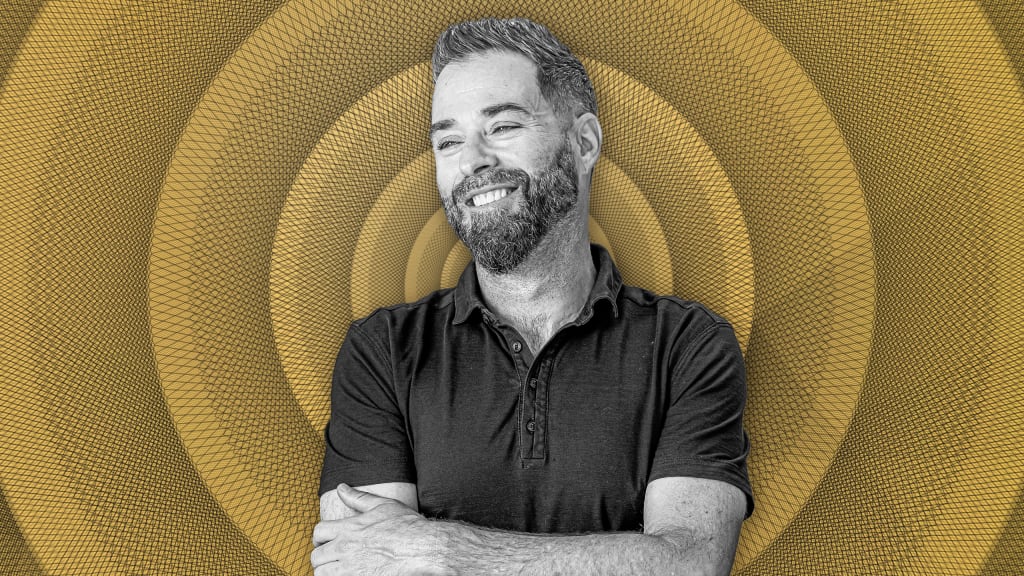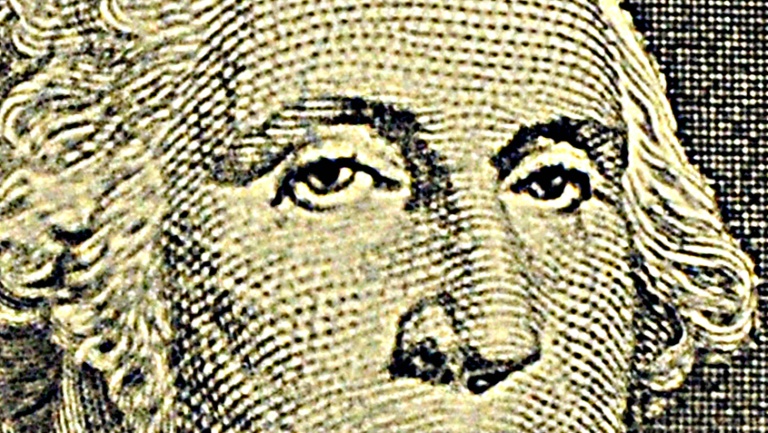How many hours have been sacrificed at the altar of the almighty mission statement? How many pressing issues have been sidelined while founders polish a sentence until it glistens with inspiration and promise? If you ask Danny Brooks, the answer is simple: “Way too f-cking many.”
Brooks—who worked as Starbucks’ VP of innovation culture and as a designer at IDEO before cofounding boutique strategy consultancy Penrose three years ago—knows something about mission statements. He’s helped dozens of companies, including some in the Fortune 100, clarify their message. In the process, he’s become a bit of an expert in mission statements: analyzing them, breathing new life into them, and pulling the plug on them.
“The majority of mission statements simply don’t work,” he says. “They’re just not as effective as people think they are, and they can be a massive waste of time.” The smarter move, he believes, is to focus on your origin story. In fact, Brooks says, if he had to choose whether to put a mission statement or an origin story on a company’s website, “I’d go origin story 100 times out of 100.”
An origin story explains how your company came to be. If executed correctly, it does something a mission statement rarely does: It communicates a company’s values and fosters a bond with the consumer. Here, Brooks provides a playbook for de-prioritzing your mission statement and bolstering your origin story.
Fast Company: What’s so bad about mission statements?
Danny Brooks: In theory, nothing. In practice? Almost everything. Mission statements are usually filled with aspirational gobbledygook and bad poetry, not to mention being totally generic, overreaching, convoluted, and, often, not even true. Some mission statements have a mansplain-y tone to them, which doesn’t work today.
Look at the Adidas mission statement: “To be the best sports brand in the world.” When you can swap out the word sports for fast food or furniture or grass, whatever, it’s a sign that there’s absolutely nothing unique about it, that it’s forgettable. It doesn’t even mention apparel!
“To inspire humanity—both in the air and on the ground.” That’s JetBlue’s mission statement. To inspire humanity? Really? I’m flying to visit my grandmother in Cincinnati, and I’m paying for my carry-on, paying to choose my seat, even paying for a pillow. How is that “inspiring humanity”? This doesn’t communicate that JetBlue knows who they are, what they’re doing, and why. Their mission statement rings false—which doesn’t help its customers or employees.
What makes the origin story so much more compelling?
An origin story is about human beings on a journey, rather than some abstract concept written at an executive offsite and wordsmithed until every stakeholder is happy but the statement’s lost all meaning. An origin story is about real characters facing real decisions with real stakes, which means that people will be more likely to read it, relate to it, remember it, and retell it.
The structure of a story is one that humans are hardwired to respond to. Look, if you sit down at a bar and the guy next to you starts making declarations, you move. But if the guy’s telling you a story, you listen. When you’re first getting to know a new couple, you don’t ask them what their future plans are or what they aspire to accomplish; you ask, “How’d you guys meet?” Their answer reveals a lot about who they are, about their values.
Okay, now I have to ask: How’d you meet your wife?
I met her in Barcelona. She didn’t speak English, I didn’t speak Spanish, and we spent our first six months together passing a dictionary back and forth and drawing pictures to communicate.
If I’m scraping that story for values, I’d say that you guys are romantics, creative, patient, and don’t take the easy route.
And maybe that we’re active listeners, adventurous, and seek understanding. All of that is communicated in two sentences.
What’s the most important thing that an origin story has but a mission statement doesn’t?
The moment of discovery. What was it that caused the founder to change his or her life and create an organization to solve a problem? We’re fascinated with the “aha moment.” Like Newton’s apple and his epiphany about gravity. It also has the benefit of being unique to the particular business or founder as opposed to a mission statement that says, “To make the world a better place.” It’s the very moment of discovery that makes an origin story sticky.
I’m going put you on the spot. Can you create a quick origin story for a company we all know well? I’ll give you, oh, 45 seconds.
[Pause] Okay, Patagonia: Yvon Chouinard, a free-spirited young climber, realized that the expensive steel pitons he used for climbing were damaging the beautiful rock faces he loved so much, and he wondered how he might reduce environmental impact on mother nature by forging his own environmentally conscious climbing gear.
What’s effective about this story? Break it down for us.
We have a character. A setting you can picture. An observable problem. And the eureka moment. And it’s all true. A mission statement is about memorization; an origin story like this can be retold after hearing it once.
How about Starbucks?
On a trip to Milan, founder Howard Schultz observed how cafes served as community gathering places, and wondered how he might create a comforting third place between home and work for Americans to connect over coffee. This puts us in the founder’s shoes as he identifies a problem, and it lets us share his emotions, which builds a bond.
You’ve described how an origin story connects with consumers. What does it do inside a company?
It can serve as a filter for the organization’s priorities and strategy, and help those within the organization stay aligned.
Founders constantly face difficult questions: What should we do next? Should we jump at this opportunity . . . at that one? If you see your competition scaling faster than you are, you’ll probably start asking yourself: Should we build more stores? Expand our product offering? Hire more salespeople? How do you decide? If you’re looking primarily at your competition, then it becomes a very narrow definition of success. It’s like asking, “Who do we want to be most like?” as opposed to looking at yourself and asking, “Who are we, and what are we uniquely positioned to accomplish?”
By referring to the values embedded in your origin story and running the decision through them, you’ll find your answer, and you won’t get yourself into a growth-for-growth’s sake spiral, which can burn out employees, damage the environment, and sink the company. The other thing is that your origin story can actually also help you write a great mission statement.
How’s that?
Let’s go back to JetBlue. Here’s what I might write for its origin story: “After 9/11, people weren’t comfortable traveling far from home. JetBlue wondered how it might return nervous customers to a safe, fun experience at 35,000 feet with a laser focus on high quality, affordable domestic travel.” Now, instead of a mission statement that talks about “improving humanity,” it’s easy to craft a unique, actionable mission statement.
Something like . . .
“To provide passengers with an exceptional, low-cost travel experience that has all the comforts of home.” Once you have your origin story, your mission statement can fall directly from it. I would even go so far as to say that you can’t have a strong mission statement without knowing your origin story.
Let’s say a founder reading this wants to write a memorable origin story. Where should they start?
I’d start by talking to the people around you—your leadership team, investors, legacy clients, newer clients—and simply ask them, “How did this whole thing begin? How did we get here?” You’ll find that a lot of people have already created origin stories for you. And those stories are frequently more emotional and moving than the one you would have created because, as a founder, you’re caught up in the minutiae and precise chronology of what you lived through. Often, the perception of how things started is more important than the actual tick-tock of how, exactly, it happened.
Where do origin stories go wrong?
One problem I see a lot is when a founder’s story is something like, “We saw white space in the market. We saw an opportunity.” People don’t want a narrative about a transaction or strategy; they want a human experience. No one feels “white space.” But the issue I see most often are origin stories that are generic.
If you’re an entrepreneur and the origin story you write centers on building a product in your garage, well, that’s all entrepreneurs. The founder of Rivian talks about how, as a kid, he liked to play with cars. There’s nothing unique there. I mean, that’s half of us. If you’re crafting your story and it starts to sound like it could be someone else, it means you need to dig deeper, get more specific. You need to dig until you identify what’s truly unique to you.
After a company writes its origin story, what’s next?
It should be the first thing on the company’s “About” page. Internally, you probably want to share the origin story in an all-hands or smaller team meetings. As the founder, talk about it in a first-person way, bring your own experiences to it, and encourage employees to connect to the values in the story with their own experiences, which can create cohesion within teams. And start using the origin story as a tool in meetings. When employees see you using it, they’ll begin to use it as well.
Is a company’s origin story locked, or can it evolve as your product changes, as the market matures?
It can definitely change, just like a mission statement can change. Microsoft‘s original mission statement, from 1980, is my favorite: “A computer on every desk and in every home.” They basically accomplished it so they retired that mission statement and wrote a new one.
In terms of origin stories, look at Taylor Swift. For a while, her story was, basically, “young, talented child model hears her grandmother sing in church and decides to be a singer.” Honestly, not a great origin story because for a performer, “learned to sing in church” is the equivalent of the entrepreneur’s “we made it in the garage” trope. But after the rights to Swift’s music were sold from under her, her origin story became a David and Goliath story, a story about a woman fighting for her songs back. It became “Taylor’s version,” which is ironic because it’s literally Taylor’s version of her origin story. And, obviously, it’s been very, very effective.
Apply to the Most Innovative Companies Awards and be recognized as an organization driving the world forward through innovation. Early-rate deadline: Friday, August 23.







